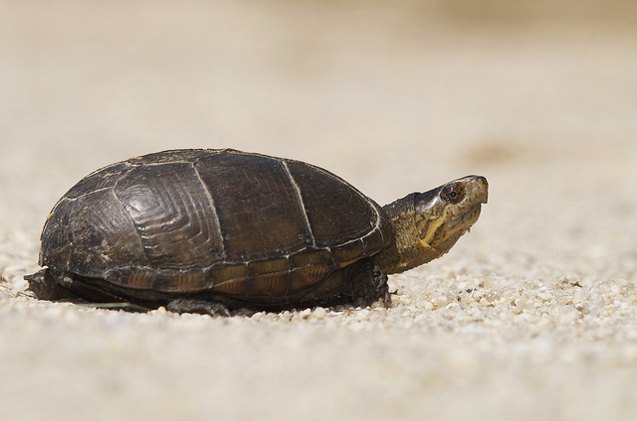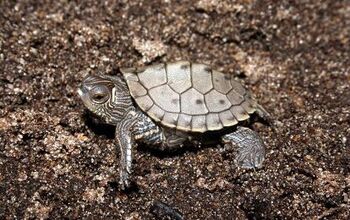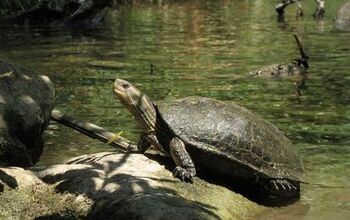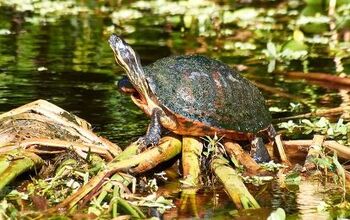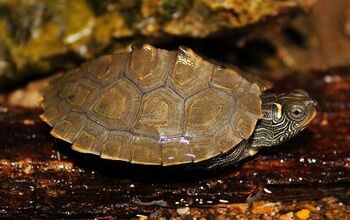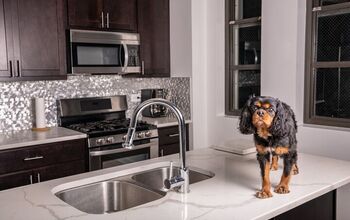Mud Turtle


About Mud Turtle
The Mud Turtle is a popular breed of turtle that is kept as a pet. They are low maintenance turtles that are a good choice for those who are beginners at keeping these animals, and they can easily be maintained in a terrarium.
When deciding to bring a Mud Turtle into your family, though, you should be certain that you are purchasing one from a reputable breeder who can guarantee that your pet was bred in captivity. Taking turtles out of their natural habitat could put their wild populations in decline, and wild turtles also tend to showcase short tempers that could lead to bites from their strong jaws.
Mud Turtles are a popular breed of turtles that are kept as pets.
Mud Turtles make their home in ponds, as well as in bodies of water with and without vegetation, though they do prefer ponds that have a lot of vegetation. These animals can generally be found in spring-fed streams, and they prefer clean, oxygenated water. In the wild, they also prefer sandy and muddy areas, as they will hibernate by burrowing into the mud.
Various species of Mud Turtles can be found throughout the United States, Central America, South America, and Mexico.
Because there are so many different species of Mud Turtles, their appearance will vary a bit. Generally, though, these are small turtles that are similar to Musk Turtles. However, they are even smaller than Musk Turtles, and their carapace isn’t domed as high. Instead, the shell of a Mud Turtle will be oval.
Also, Mud Turtles will have one or two hinges on the plastron. Therefore, they have the ability to tightly close their shell. And these turtles will feature glands that are located on the sides of the body. These could release a foul smelling fluid when these animals are stressed.
Male Mud Turtles will be larger than their female counterparts, and they will also feature a larger tail, larger legs, and a larger head. The tail of males will showcase a bony spine, and the male has scaly, rough patches on the insides of the legs as well.
The low maintenance Mud Turtle are a good choice for those who are beginners.
Again, there are many different species of Mud Turtles. To give you an idea of how their appearance is similar but with minor differences, let’s focus on four of the more popular breeds: the Eastern Mud Turtle, the Mississippi Mud Turtle, the Striped Mud Turtle, and the Yellow Mud Turtle.
The Eastern Mud Turtle will have a dark shell that is olive brown in color and does not feature any kind of pattern, but the plastron will be yellow.
The Mississippi Mud Turtle is very similar, but you will notice that there are a couple of light colored lines on the turtle’s head, extending from the tip all the way back to the shell. These can be pale yellow or deep tan.
The Striped Mud Turtle is easy to recognize because the coloring is different. You will quickly note that there are three stripes that are light in color and run vertically on the shell. There is also one stripe in between the eyes. These stripes can be yellow, gold, or tan.
Finally, the Yellow Mud Turtle can be recognized by its head and neck, which feature yellow extending from the shell to the chin.
To keep your Mud Turtle happy and healthy, he will need enough space. If you are planning on housing one or two Mud Turtles, you should have a minimum of a 40-gallon tank (more space is preferred). You will need to clean this enclosure, which should provide adequate space for your turtle to swim comfortably, frequently.
Mud Turtles will need to bask, so you should set up a basking area within the enclosure. A heat lamp should be placed above the basking site, and it should be set to around 90°F. The rest of the enclosure should be maintained anywhere from 80-85° and should not go below 70°F. And in addition to the basking temperature, you will also need to use a high quality water heater to maintain the temperature anywhere from 70-75°F.
For substrate, you can simply place gravel along the bottom of your pet’s tank. You will also need to set up a UVB light that you can place over your turtle’s enclosure and keep on for half of the day.
Mud Turtles can do well in a community tank with fellow Mud Turtles, as well as with Musk Turtles.
You can feed your Mud Turtle a commercial pelleted diet for turtles, along with vitamin and calcium supplements, to provide a foundation for good health through proper nutrition.
Because Mud Turtles are omnivorous, they will eat a variety of foods, including snails, insects, fish, various worms, and dark leafy greens.
Mud Turtles can do well in a community tank with fellow Mud Turtles, as well as with Musk Turtles.
You should only handle your turtle when it is necessary to do so, as these turtles can bite and hurt you if they become stressed or frightened. Also, like Musk Turtles, they will release a liquid from their anal glands as a defense mechanism. This will be foul smelling, so you want to avoid it by keeping your turtle relaxed and comfortable.
Photo credit: Brian Henderson/Flickr; Kara Jones/Flickr; Billtacular/Flickr

Lisa Selvaggio is a freelance writer and editor, and our resident cats-pert, with certifications in pet nutrition and pet first aid. She enjoys producing content that helps people understand animals better so they can give their pets a safe and happy home.
More by Lisa Selvaggio



